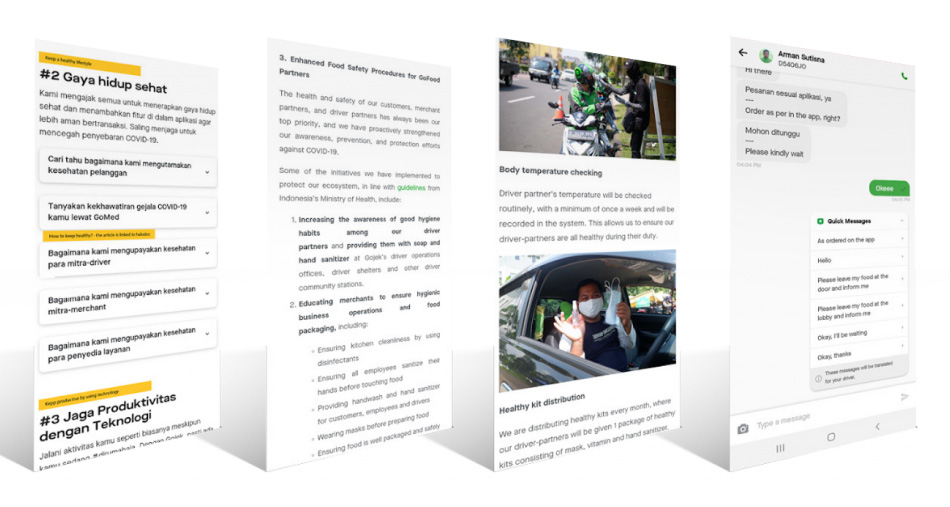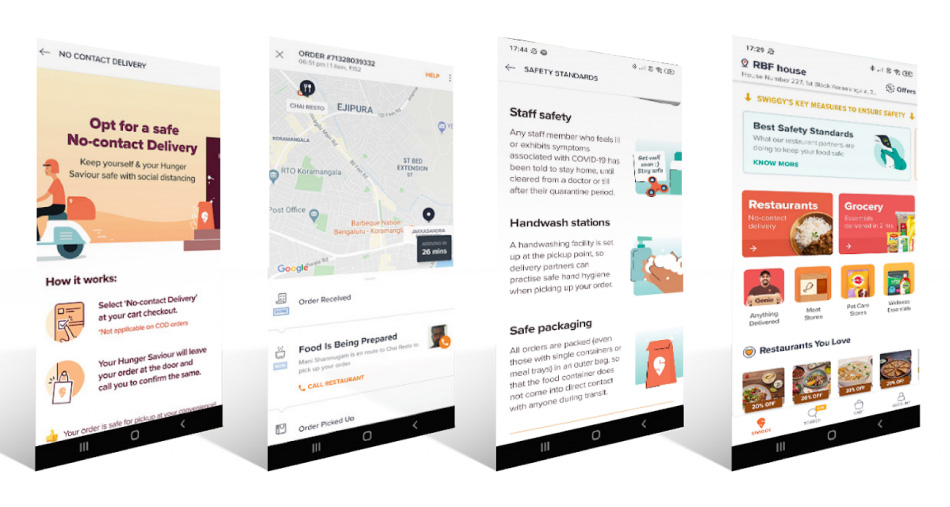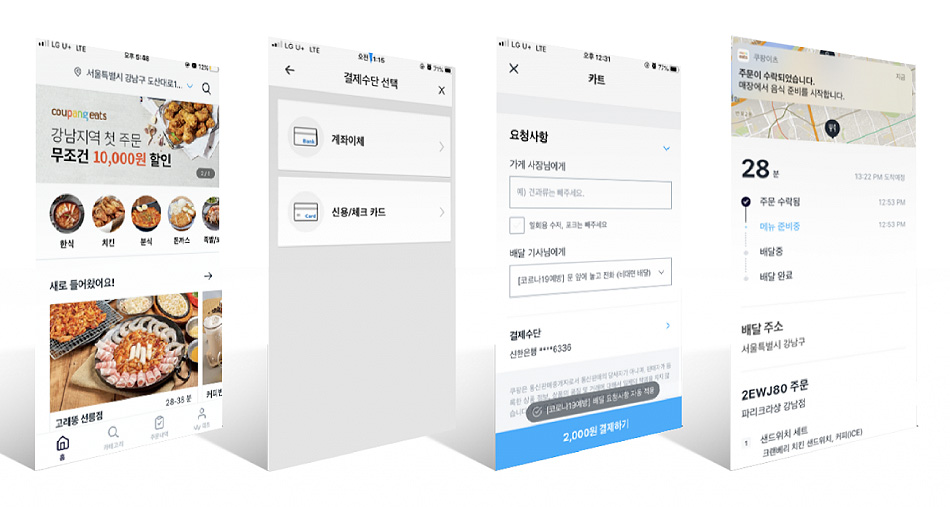
With the world going through unprecedented times, the role of food delivery apps has become more relevant than ever. To ensure the safety of both the customer and delivery partners these services have had to minimize physical contact as well as provide essential products to individuals who can’t obtain them by themselves.This article highlights home delivery food apps in Indonesia, India and South Korea, that stood out from the 47 Apps reviewed by the UXalliance, and who safely and effectively navigated the pandemic within their own cultural and economic contexts.
While small differences exist, all three apps had common goals;
that ultimately improved the every day lives of people struggling with the unique circumstances caused by the pandemic.
Gojek, based in Indonesia, successfully managed to focus their public welfare measures for people who are often neglected in the business value chain.

The Indonesian government’s measures were not strict compared to that in other countries, with no prolonged lockdown or special restrictions on using food delivery services. This spurred Gojek to take their own measures to ensure the safety of their customers and delivery partners.Having initiated public welfare measures already, Gojek began to push the initiative further to directly help their delivery partners at higher risk of being exposed to the virus. They provided temperature screening points in various areas of the city, vehicle disinfection as well as protective gear for free. In addition, they also emphasized the importance of creating and sharing food safety protocols to all associated business partners and local restaurants to ensure the quality of food being processed
for all users.
The Swiggy app managed to prioritize the safety of people by completely transitioning their system to digital contactless payment. India is a heavily cash driven economy, so complete elimination of physical payment exchange was key to prevent further spread of the disease. Prior to this policy change, people could opt for payment by cash and often gave cash tips on receiving delivery. With complete policy change in digital and contactless payment, options now range from e-wallet services to online bank transfers.

Swiggy helped to make the confinement bearable for many individuals during the early intensive lockdown period which lasted 40 consecutive days. In addition, they also emphasized the importance of taking care of one another within communities by highly recommending that it’s users leave drinks for delivery people as a gesture of gratitude to keep them hydrated during
their runs.
Similarly, in South Korea contactless social and economic activities began to increase early in the pandemic. Coupang, the largest online retailer in South Korea, is behind the food delivery app Coupang Eats. They announced in late February that they’d decided to switch entirely to ‘contactless’ delivery and payment systems as a safety measure against the virus.

Before the pandemic users could select from either ‘Doorstep delivery’ or ‘Direct delivery’, which both required face-to-face interaction between the customer and the delivery person.
With the policy change, ‘contactless delivery’ is now the default setting, seamlessly encouraging the safest method for both their customers and delivery people.
In addition, orders made in areas where gatherings are highly discouraged, Coupang Eats in cooperation with the government, requested their users to refrain from eating and drinking in these places temporarily, to ensure public safety. When users completed orders in areas such as Han River Park (a haven for ten million citizens of Seoul), an app generated message was sent out reminding customers to minimize social activities as well as the country’s public health guidelines for COVID-19.
At the heart of the services new policies and practices is supporting meaningful and safe experiences for all involved in the delivery app ecosystem. This ranges from a delivery person on their bicycle, to the customers in lockdown patiently waiting for their deliveries to arrive on their doorstep.The decisions made and communicated in times of crisis show how strong the ties are between the brand, apps, their partners, users, suppliers and ecosystems. A successful response to a crisis is reflected effectively utilising such digital platforms to respond in a unified and consistent way. The apps mentioned in this article show how companies can effectively utilise their ecosystems to fight COVID-19 and continue to deliver food at the same time.